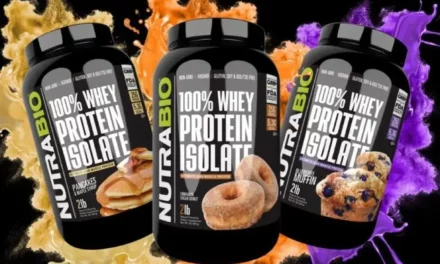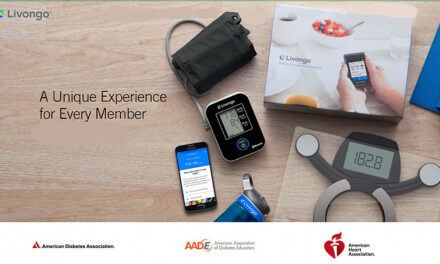Here we look at Benefiber and Diabetes, with the intention of answering Is Benefiber Good For Diabetics?, When it is good for diabetics and when it is bad?
Incorporating Benefiber supplements into the diet is one way we can meet your recommended daily fiber requirements. Adding foods rich in fiber into our daily diet is very important and beneficial, especially to those who are with diabetes. It is a great way to help reduce the risk of diabetes, manage diabetes well and reduce its complications.
Benefiber fiber supplement is low in calories, low in carbs, so it cannot increase your blood sugar levels. It contains enough fiber, which can help to boost your daily fiber intake when added to your daily diet.
It contains plant-based soluble fiber like wheat dextrin, inulin, and partially hydrolyzed guar gum. These fibers can help to improve the symptoms of diabetes. They can help lower insulin resistance, improve blood sugar control, reduce bad cholesterol and promote weight loss.
What is Benefiber?
Benefiber is an OTC dietary fiber supplement formulated with wheat dextrin as the main active ingredient. It is a prebiotic fiber supplement that is 100% organic, clear, taste-free, gluten-free and sugar-free.
Benefiber is manufactured by Novartis Consumer Health Inc, a GlaxoSmithKline subsidiary.
The fiber supplement provides about 3 to 6g of probiotic fiber per serving. It is available in unflavored and flavored forms, as well as powdered and chewable forms.
Unflavored Benefiber
The unflavored typed of Benefiber mainly includes wheat dextrin without aspartame.
Flavored Benefiber
The flavored Benefiber comes in different flavors such as:
They are artificially flavored and contain additional ingredients like citric acid, potassium citrate, aspartame, maltodextrin, and natural flavors.
Depending on the flavor, they may also include different ingredients such as tea extract, potassium, acesulfame, sucralose, FD&C yellow 5 and 6.
Powdered and Chewable Benefiber
The chewable and powder form may include calcium in the form of calcium carbonate. The Heart-Healthy version may also include the B – vitamins.
Benefiber Range Of Products
Benefiber is available in different versions.
- Benefiber Original
This prebiotic fiber is clear, taste-free and dissolves completely in liquid. It helps nourish good bacteria inhabiting the gut*.
- Benefiber Prebiotic Fiber + Probiotics Gummies
This is a 2 in 1 delicious gummy that is packed with both prebiotic fiber and probiotics to help promote and optimize (good) gut (digestive) health by adding more and nourishing the already existing probiotics in the gut.
- Benefiber Advanced Digestive Health
It is 100% natural, low FODMAP, vegetarian, and gluten-free. It helps relieve occasional constipation (non-severe) and abdominal discomfort without causing diarrhea.
- Benefiber Healthy Shape
This prebiotic fiber supplement is in powdered form. It is formulated to curb cravings and help keep you fuller for longer.
- Benefiber On The Go
A pack of premeasured single-serve Benefiber sticks that make it easy to add prebiotic fiber to your diet at your convenience.
- Benefiber Chewable
A fiber supplement in the form of a great-tasting chewable tablet.
- Benefiber Kids
This version is formulated for kids.
Nutritional Contents
Below noted the content of Benefiber Original, Prebiotic Fiber + Probiotic Gummies, Advance Digestive Health, Kiwi-Strawberry, Healthy Shape, And Chewable.
Table 1 Nutritional Content of Benefiber Original
|
Benefiber Original |
Serving size: 2 tbs (4g) |
| Amount per serving ( % DV) | |
|
Calories |
15 |
|
Sodium | |
|
Carbohydrates | 4g (1%#) |
|
Dietary Fiber | 3 g (11%#) |
|
Soluble fiber |
3g |
|
Total sugar |
0 g |
|
Includes1 g of added sugar | |
|
Bacillus coagulans MTCC 5856 (Lactospore®)†† | |
|
Inulin (as chicory root fiber) | |
|
Other Ingredients: |
Wheat dextrin |
Table 2 Nutritional Content of Prebiotic Fiber + Probiotic Gummies
|
Benefiber prebiotic fiber + probiotic gummies |
Serving size: 2 gummies |
| Amount per serving (% DV) | |
|
Calories |
25 |
|
Sodium | 10 g (<1%) |
|
Carbohydrates | 6g (2%#) |
|
Dietary Fiber | 3 g (11%#) |
|
Soluble fiber |
3g |
|
Total sugar |
1 g |
|
Includes1 g of added sugar | (3%#) |
|
Bacillus coagulans MTCC 5856 (Lactospore®)†† |
20mg |
|
Inulin (as chicory root fiber) |
3g |
|
Other Ingredients | water, sucrose Less than 2% of: pectin, natural flavors, citric acid, sodium citrate, color (black carrot, annatto, genipap juice concentrate, watermelon juice concentrate), coconut oil, carnauba wax, corn starch |
Table 3 Nutritional Content of Advance Digestive Health
|
Benefiber Advanced Digestive Health |
Serving size: |
| Amount per serving (% DV) | |
|
Calories |
20 |
|
Sodium | 10 g (<1%) |
|
Carbohydrates | 5 g (2%#) |
|
Dietary Fiber | 4 g (14%#) |
|
Soluble fiber |
4g |
|
Total sugar |
0 g |
|
Includes1 g of added sugar | |
|
Bacillus coagulans MTCC 5856 (Lactospore®)†† | |
|
Inulin (as chicory root fiber) | |
|
Other Ingredients: |
Partially hydrolyzed guar gum |
Table 4 Nutritional Content of Kiwi-Strawberry
|
Kiwi Strawberry Benefiber |
Serving size: 1 stick |
| Amount per serving (% DV) | |
|
Calories |
20 |
|
Sodium | |
|
Carbohydrates | 5 g (2%) |
|
Dietary Fiber | 3 g (11%#) |
|
Soluble fiber |
3g |
|
Total sugar |
0 g |
|
Includes1 g of added sugar | |
|
Bacillus coagulans MTCC 5856 (Lactospore®)†† | |
|
Inulin (as chicory root fiber) | |
|
Other Ingredients: |
wheat dextrin, citric acid, maltodextrin, aspartame**, natural flavors, potassium citrate, acesulfame potassium, tricalcium phosphate, calcium silicate, gum arabic, magnesium oxide, titanium dioxide, red 40 |
Table 5 Nutritional Content of Healthy Shape
|
Benefiber Healthy Shape |
Serving size:3 ¼ tsp (7g) |
| Amount per serving (% DV) | |
|
Calories |
30 |
|
Sodium | |
|
Carbohydrates | 7 g (3%) |
|
Dietary Fiber | 5g (18%#) |
|
Soluble fiber | |
|
Total sugar | 0g (0%) |
|
Includes1 g of added sugar | |
|
Bacillus coagulans MTCC 5856 (Lactospore®)†† | |
|
Inulin (as chicory root fiber) | |
|
Other Ingredients: |
wheat dextrin, sorbitol, corn starch, microcrystalline cellulose, dextrates, citric acid, natural and artificial flavor (soy), magnesium stearate, silicon dioxide, sucralose, aspartame**, acesulfame potassium, red 40 lake, yellow 6 lake, blue 1 lake |
Table 6 Nutritional Content of Benefiber Chewable
|
Benefiber Chewables |
Serving size: 3 tablets |
| Amount per serving (% DV) | |
|
Calories |
30 |
|
Sodium | |
|
Carbohydrates | 8 g (3%) |
|
Dietary Fiber | 3g (11%#) |
|
Soluble fiber |
2g |
|
Total sugar |
0 g |
|
Includes1 g of added sugar | |
|
Bacillus coagulans MTCC 5856 (Lactospore®)†† | |
|
Inulin (as chicory root fiber) | |
|
Other Ingredients: |
Is Benefiber Good For Diabetics?
Everyone needs fiber in their diet. And, one way to get fiber is by eating plant foods such as fruits, vegetables, whole grains, seeds and nuts. But, not everyone gets up to the daily required amount of fiber from their diet, so they opt for Fiber supplements like Benefiber.
Fiber is an important nutrient with a lot of health benefits. Incorporating fiber into our diet can help to prevent or reduce the risk of developing type 2 diabetes and reduce the risk of cardiovascular diseases.
People with type 2 diabetes know that “it is not only the quantity and the type of food that you eat that is important too”, but the quality of the food also matters. The foods you consume can spike your blood sugar level.
Low GI food can keep you full without increasing your blood sugar levels. Fiber is one of the things you need in your diet to help this process.
Fiber has a lot of health benefits, especially for a healthy gut, lowering cholesterol and controlling blood sugar spikes. The American Heart Association and the American Diabetes Association recommend that people with diabetes to eat about 25 to 50 g of fiber daily.
Although fiber from plant food is the best, but fiber supplements such as Benefiber can help you get your daily required quantity of fiber.
Fiber is a part of carbohydrate that the body can’t digest, so it doesn’t raise your blood sugar level rather, it helps to slow down the rise in blood sugar following a meal.
There are two types of fiber — soluble and insoluble fiber and both have great health benefits.
Benefiber is a soluble fiber supplement.
The soluble fiber contained in Benefiber is wheat dextrin, inulin as a soluble fiber when it is taken. It absorbs water and becomes gummy or sticky as they pass through the digestive tract. It helps reduce the absorption of cholesterol in the small intestine by binding cholesterol particles to itself.
It also helps in weight management which is a risk factor for diabetes and can increase the risk of diabetes complications.
Since fiber is low in calories, fiber cannot be easily digested; it stays in the stomach and keeps one fuller for longer. This help to create a calorie deficit that may lead to weight loss as the quantity of food one consumes is reduced.
This is another plus for people with diabetes since losing weight can help to reduce the symptoms of diabetes and even reverse in some cases.
When Is Benefiber Not Recommended To Diabetics?
FDA defines gluten-free products as products with less than 20 ppm of gluten. All Benefiber products contain less than 20 ppm of gluten.
People ( with diabetes and without diabetes) with gluten intolerance and those who have celiac disease, should stay away from Benefiber or any other products containing any level of gluten.
Some ranges of Benefiber contain lactose and should be avoided by those who are lactose intolerant or those who have a milk allergy.
Diabetes Drugs and Benefiber – How Would They Interact?
Most medications may interact and interface with the effectiveness of anti-diabetic medications, cholesterol-lowering drugs and blood pressure control medications.
Consult your doctor before taking Benefiber supplements if you are on any medication. You can also limit the risk of any interaction by taking Benefiber two to four hours before or after your diabetes medication.
What Does Research Say?
The health benefits of Benefiber are linked to the general benefits of soluble fibers, the benefit of wheat dextrin and prebiotics-probiotic connections.
These benefits include:
- Regulate the digestive system
According to a study published by U.S. National Institutes of Health, wheat dextrin, the main active ingredient in Benefiber, can help regulate the digestive system, increase the absorption of micronutrients, balance blood glucose and lower cholesterol.
- Better gut health
As a prebiotics, Benefiber can encourage the growth of probiotics (good bacteria and yeast) that inhabit the gut microflora.
According to a study, an increased intake of fiber can stimulate the growth of microorganisms like L.acidophilus, L. case I, and bifidobacteria. These probiotics in turn believed to prevent gastrointestinal tract disorders, diarrhea, lower the risk of respiratory tract infections and allergies.
- Weight and belly fat loss
Research has indicated that the accumulation of fat, especially around the abdominal part of the body, can increase the risk of developing type 2 diabetes and heart disease.
However, a 2012 study revealed that an increase in fiber intake could reduce the risk of belly fat.
As such, we can conclude that soluble fiber does not only help to keep on full and satisfied for longer, but it also suppresses appetite, which will possibly help to reduce calorie intake and further assist in weight loss.
- Lower cholesterol
Dietary fiber intake can reduce bad cholesterol and total body cholesterol by reducing the amount of bile absorbed in the intestines. According to the American Journal of Nutrition, soluble fiber can lower both LDL cholesterol and also total body cholesterol.
- Blood Sugar control
A study has revealed that eating fiber can increase insulin e sensitivity and help balance blood sugar levels.
Fiber cannot spike the blood sugar the way carbs does because the body cannot break down and absorb the fiber. Instead, the fiber helps to keep one full for longer, slowing down the rate at which the food we eat digest, consequently slowing down the rate at which sugar is released into the bloodstream.
How To Take Benefiber?
Since the Benefiber supplements are tasteless and colorless, you can add it to your favorites meals, smoothies, coffee, tea, juice, and soup. Add it in your soft foods such as pudding, applesauce, or yogurt.
You can also cook and back with the supplements as it dissolves completely without changing the thickness or consistency of the food.
Why Should You Use Benefiber?
- 100% organic/ plant-based fiber
- Clear, so you can add it to your food or drink without changing the colour of the meal
- Taste-free
Aside from the flavored Benefiber, others are taste-free, so it can add to any meal without changing its taste.
- Low FODMAP
- Sugar-free, it cannot spike your blood glucose level
- Gluten-free
- It dissolves completely and leaves no grits
- Non-thickening, therefore it does not change the consistency of the food or drink it is added to.
Dosage And Who Can Take Benefiber Supplements?
Both children and adults can take Benefiber. It is not recommended for children under 6 years.
|
Adults 12 years and above |
Children 6 -11 years | |
|
Benefiber Original |
2 tbs Twice daily |
1 tbsp, twice daily |
|
Benefiber Prebiotic Fiber + Probiotic Gummies |
2 gummies, twice daily |
1 gummy, twice daily |
|
Benefiber Advanced Digestive Health |
1 tbs, twice daily |
1 tbs, once daily |
|
Kiwi Strawberry Benefiber |
1 stick |
½ stick |
|
Benefiber Healthy Shape |
1 tbs, twice daily |
Consult your doctor |
|
Benefiber Chewable |
3 tablets, 3 times daily |
1½ tablets 3 times daily |
Benefiber Side Effect
Statistics suggest that most Americans don’t get anywhere near the recommended amount of fiber (i.e. 20 to 35 grams per day). So, taking a fiber supplement, like Benefiber, can help improve your fiber intake and lower your risk for constipation.
Although the wheat dextrin that makes up Benefiber is generally regarded as safe, if you don’t use this product properly, you could experience some unpleasant gastrointestinal side effects.
Some of the Gastrointestinal side effects include;
- stomach upset
- flatulence
- diarrhea
- the feeling of being full
- gastrointestinal pain
- nausea
- gas and bloating
These side effects usually occur within a few hours of taking Benefiber. Luckily Benefiber doesn’t expand in water like psyllium-based fiber supplements, so it doesn’t pose a risk of choking.
Here are a few tips to help minimize these occasional side effects that sometimes occur after taking fiber supplements:
- Be sure to drink a full glass of water or other noncarbonated drink each time you take Benefiber or any other fiber supplement.
- Drink enough water throughout the day to prevent dehydration.
- Gradually increase your fiber. Starting with the minimum dose once a day, and gradually increasing.
- Make sure not to exceed the maximum recommended dosage.
Here is a review of Benefiber…
Alternatives To Benefiber For Diabetics
Here are other alternative fiber supplements that people with diabetes can use.
- Metamucil
- Fibercon
- Garden Of Life raw organic fiber
- Heather’s Tummy Fiber Acacia Senegal pouch
- Vitafusion Fiber Well Fit Gummy
Finally…
Fiber has a lot of benefits to the digestive and overall health. Adding fiber to your diet can help to feed “good” bacteria in the gut, reduce cholesterol, promote weight loss and regulate blood sugar levels.
People can include fiber supplements into their diet when they are not getting enough fiber from their foods. Taking a fiber supplement alongside a healthy diet may help ease digestive issues or promote weight loss.
So, considering all the scientific evidence on the benefits of soluble, prebiotic fiber to people with diabetes. It can be said that Benefiber is worth trying. This does not mean it should be used as the sole source of fiber because it is a supplement that is supposed to help you meet your dietary needs.












